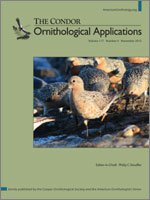Predictive population modeling contributes to our basic scientific understanding of population dynamics, but can also inform management decisions by evaluating alternative actions in virtual environments. Quantitative models mathematically reflect scientific hypotheses about how a system functions. In Delaware Bay, mid-Atlantic Coast, USA, to more effectively manage horseshoe crab (Limulus polyphemus) harvests and protect Red Knot (Calidris canutus rufa) populations, models are used to compare harvest actions and predict the impacts on crab and knot populations. Management has been chiefly driven by the core hypothesis that horseshoe crab egg abundance governs the survival and reproduction of migrating Red Knots that stopover in the Bay during spring migration. However, recently, hypotheses proposing that knot dynamics are governed by cyclical lemming dynamics garnered some support in data analyses. In this paper, I present alternative models of Red Knot population dynamics to reflect alternative hypotheses. Using 2 models with different lemming population cycle lengths and 2 models with different horseshoe crab effects, I project the knot population into the future under environmental stochasticity and parametric uncertainty with each model. I then compare each model's predictions to 10 yr of population monitoring from Delaware Bay. Using Bayes' theorem and model weight updating, models can accrue weight or support for one or another hypothesis of population dynamics. With 4 models of Red Knot population dynamics and only 10 yr of data, no hypothesis clearly predicted population count data better than another. The collapsed lemming cycle model performed best, accruing ~35% of the model weight, followed closely by the horseshoe crab egg abundance model, which accrued ~30% of the weight. The models that predicted no decline or stable populations (i.e. the 4-yr lemming cycle model and the weak horseshoe crab effect model) were the most weakly supported.
How to translate text using browser tools
2 September 2015
Comparing models of Red Knot population dynamics
Conor P. McGowan
ACCESS THE FULL ARTICLE

The Condor
Vol. 117 • No. 4
November 2015
Vol. 117 • No. 4
November 2015
Bayesian model weight updating
Caldris canutus
lemming cycles
Population modeling




